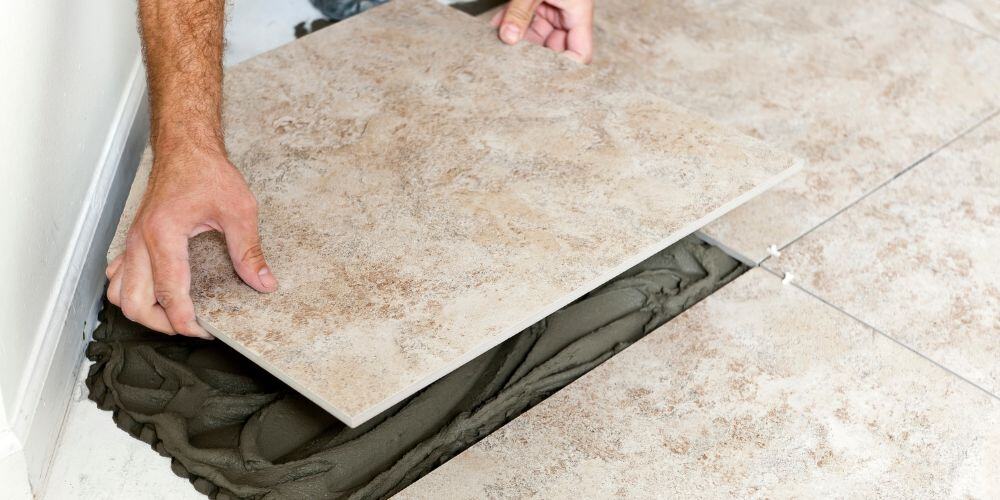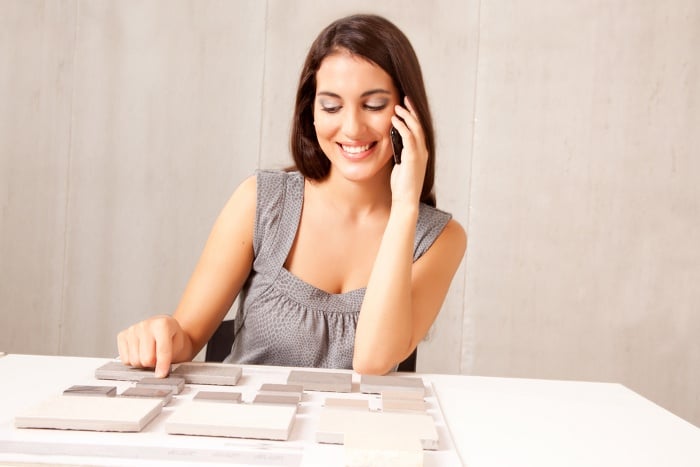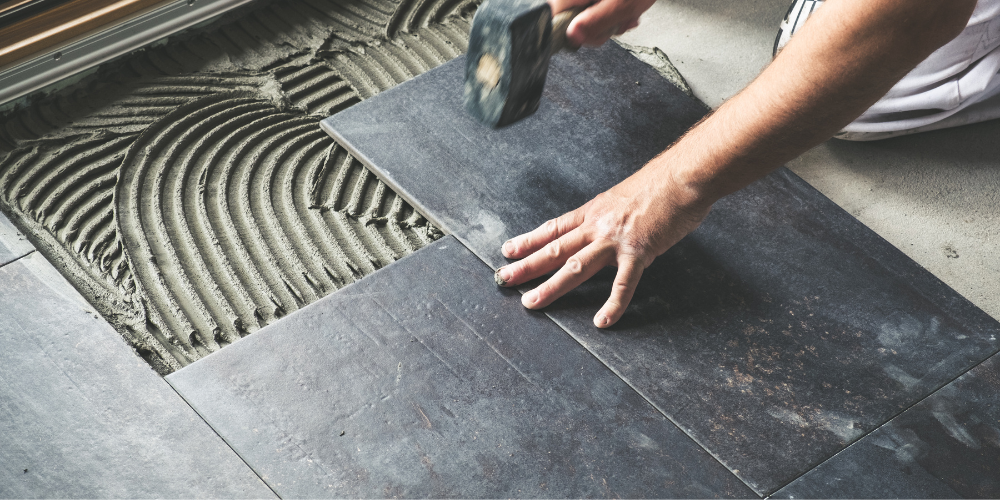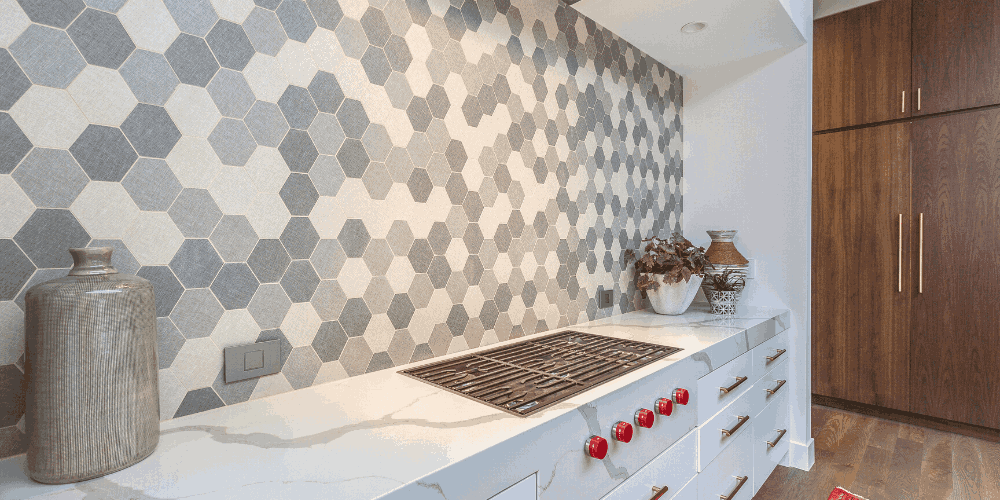The Updated Tile Guide: Types, Sizes, Patterns and More
While there are certain things you should understand about tile before using it in your home, there are applications for tile in your bathroom or kitchen that may make you think: I didn’t know you could do that with tile.
With that in mind, let’s look at an updated tile guide that examines tiles' various types, sizes, patterns, finishes and textures, and care and maintenance. Armed with this information, you’ll better understand what you want when working with Sunwood Development.
Types of Tiles
Different types of tiles have various uses, and some tiles are multipurpose.
Wall tiles tend to be smaller, thinner, and lighter, making it easier for them to stay put vertically on a bathroom or kitchen wall. Tiles used to create a backsplash fall into this category as well.
Floor tiles, by comparison, are thicker, more durable, and designed to withstand more wear and tear. One of the best floor and wall tiles known for its durability is porcelain tiles.
In addition, some tiles are suitable for both indoor and outdoor use. Most are made from natural stone or hardy terra cotta. They’re usually much heavier and wear well. Some are more like flagstone in some respects than a classic tile.
What type of tile you use in your home will largely depend on your needs, budget, and preferences.
Materials
When selecting tiles, you can choose from many different types of materials and finishes. Some of the basic, more standard options you’ll find will include:-
Travertine tile: This is a type of limestone tile.
-
Ceramic tile: A baked clay tile that ranges from delicate porcelain to rustic terracotta.
-
Faux wood tile: This tile type looks like wood and is warmer than traditional tile.
-
Marble tile: This tile type is expensive and can be as slippery as a floor tile, but it is hard-wearing and beautiful.
-
Slate tile: This is also a natural stone tile that tends to be less delicate than marble, and because it’s textured, it is less slippery.
-
Granite and quartz: These are two more beautiful natural stone options that can be costly.
-
Pebbles and mosaics: These tiles are popular in bathrooms and kitchens. They can be installed creatively, making them an excellent option for adding interest to a room.
-
Glass tile: Thanks to their reflective properties and modern aesthetic, glass tiles are also becoming popular in kitchens and bathrooms.
Different Tile Sizes
You’ll have many options when choosing the size of your tile. The sizes of tile range from roughly 1-inch square (mosaic tile) to large, 24-by-24-inch tiles typically used for flooring. When selecting tile sizes for your bathroom, the available options can create various design effects, from small, intricate mosaics to bold, large-format tiles.
Some standard floor tile sizes include 16-by-16 inches, 12-by-12 inches, 6-by-6 inches, and 4-by-4 inches. Subway tile remains popular and is typically available in 3-by-6-inch or 2-by-4-inch dimensions. These are fairly common tile sizes for bathrooms, especially for backsplashes or shower walls, and they provide a classic, clean look.
Bathroom tile sizes are versatile, with smaller tiles being ideal for adding detail or creating borders, while larger tiles can make a space feel more expansive. Floor tile sizes also vary, with larger tiles like 12-by-24 inches becoming increasingly popular for bathrooms, as they minimize grout lines and give a sleek appearance.
Tile thickness varies as well. Generally, tiles measure between about 1/8 inch and 1/3 inch thick. Of course, the size and thickness of a tile will determine its weight, which often decides whether it is a good choice for installation on the wall or your floors.Types of Tile Patterns
There are many different types of tile patterns. When selecting tile patterns, two primary considerations are the design of the actual tile and the way it is laid on the wall or floor. In terms of style, there are historic options, modern, monochromatic designs, and everything in between.
Tile installation patterns include the classic straight lay, where tiles are lined up vertically and horizontally; a brick pattern, where alternate rows are staggered; or herringbone, an alternating arrangement to achieve a V-shaped effect.
The pattern in which tiles are laid can be as crucial to the overall look as the tile itself, so be sure to consider this and discuss options with your home builder or remodeler.Tile Finishes and Textures
Tile finishes and textures play a significant role in both aesthetics and functionality. Glossy finishes, for example, are ideal for backsplashes as they reflect light and are easy to clean.
Matte finishes, however, are perfect for flooring as they provide a non-slip surface, making them a safer option in bathrooms or kitchens. In addition, textured tiles can add depth and interest to a room, mimicking natural materials like stone or wood while being more practical for high-traffic areas.Maintenance Tips for Different Types of Tiles
Different tiles require different maintenance approaches. For example, porcelain and ceramic tiles are relatively easy to clean with mild detergent and water. In contrast, natural stone tiles like marble or slate may need special cleaners to avoid damage or discoloration.
In addition, sealing is an essential part of tile maintenance. Sealing natural stone tiles is often recommended to protect against stains and moisture. However, not all tiles require sealing.
Moreover, regular upkeep can keep your tiles looking new and prolong their lifespan, especially in high-moisture areas like bathrooms or kitchens.Sunwood Can Help You Choose Tiles For Your Home Renovation
New manufacturing methods and printing technologies are expanding the options for using tiles in your home. Today's trend seems to focus on patterns, shape, and texture. In short, there are plenty of ways you can use tile to add beautiful finishing touches to your home.
We recommend you ask your home builder or remodeler – Sunwood – about new materials and options when planning your kitchen or bath project. We can help you choose the perfect tiles for your project. Simply contact us here, and we’ll put you in touch with one of our experts who can help.







